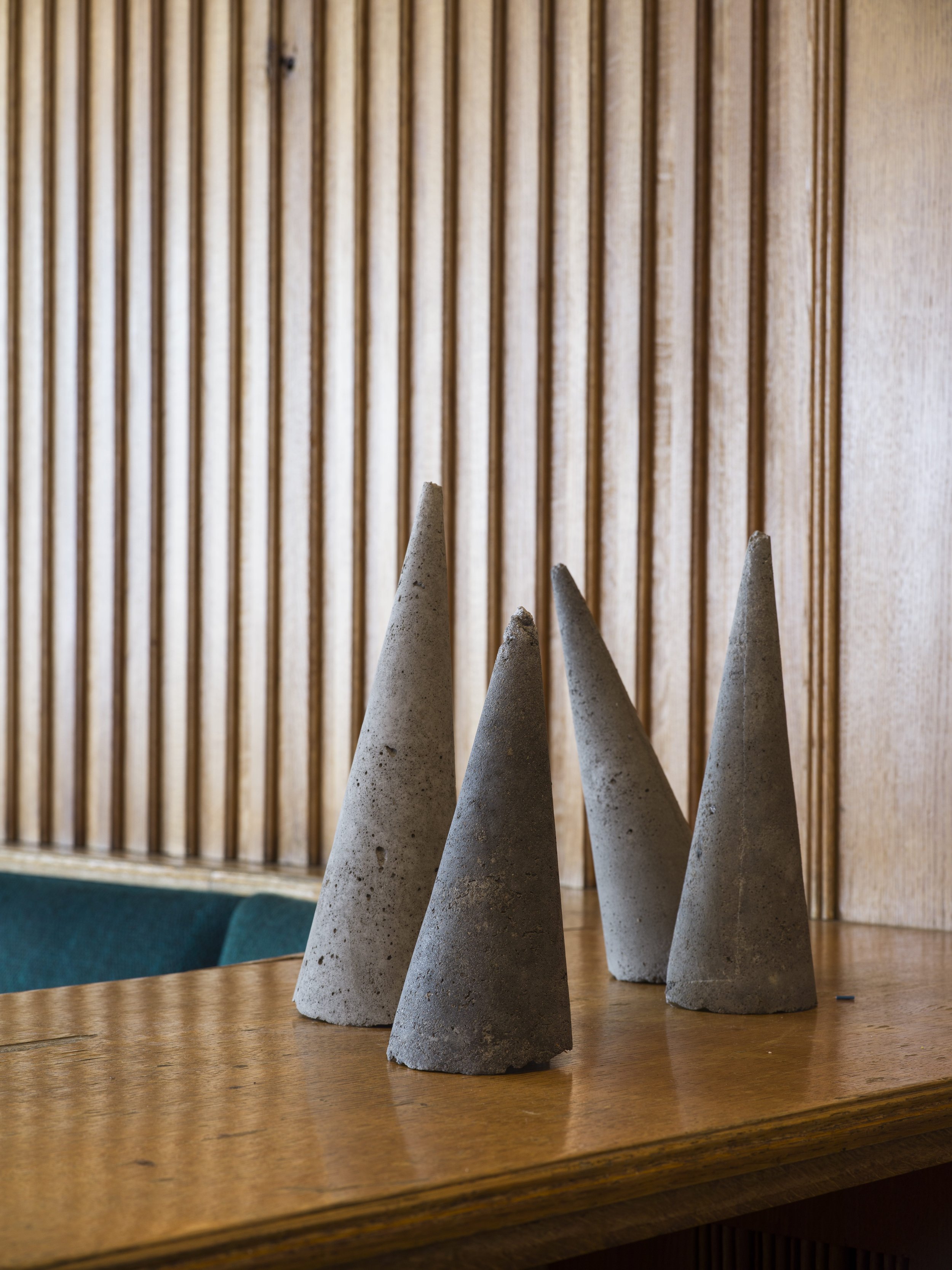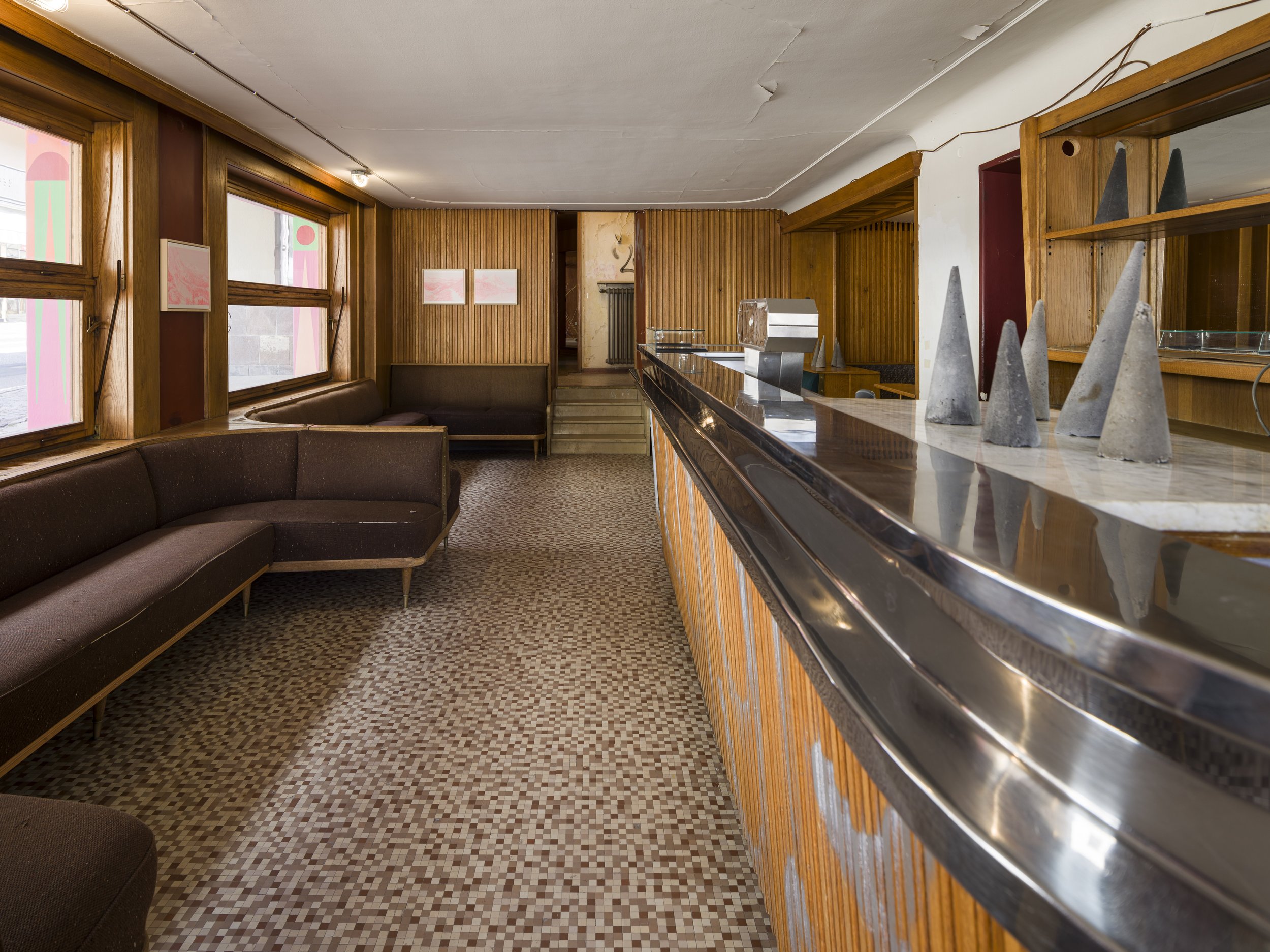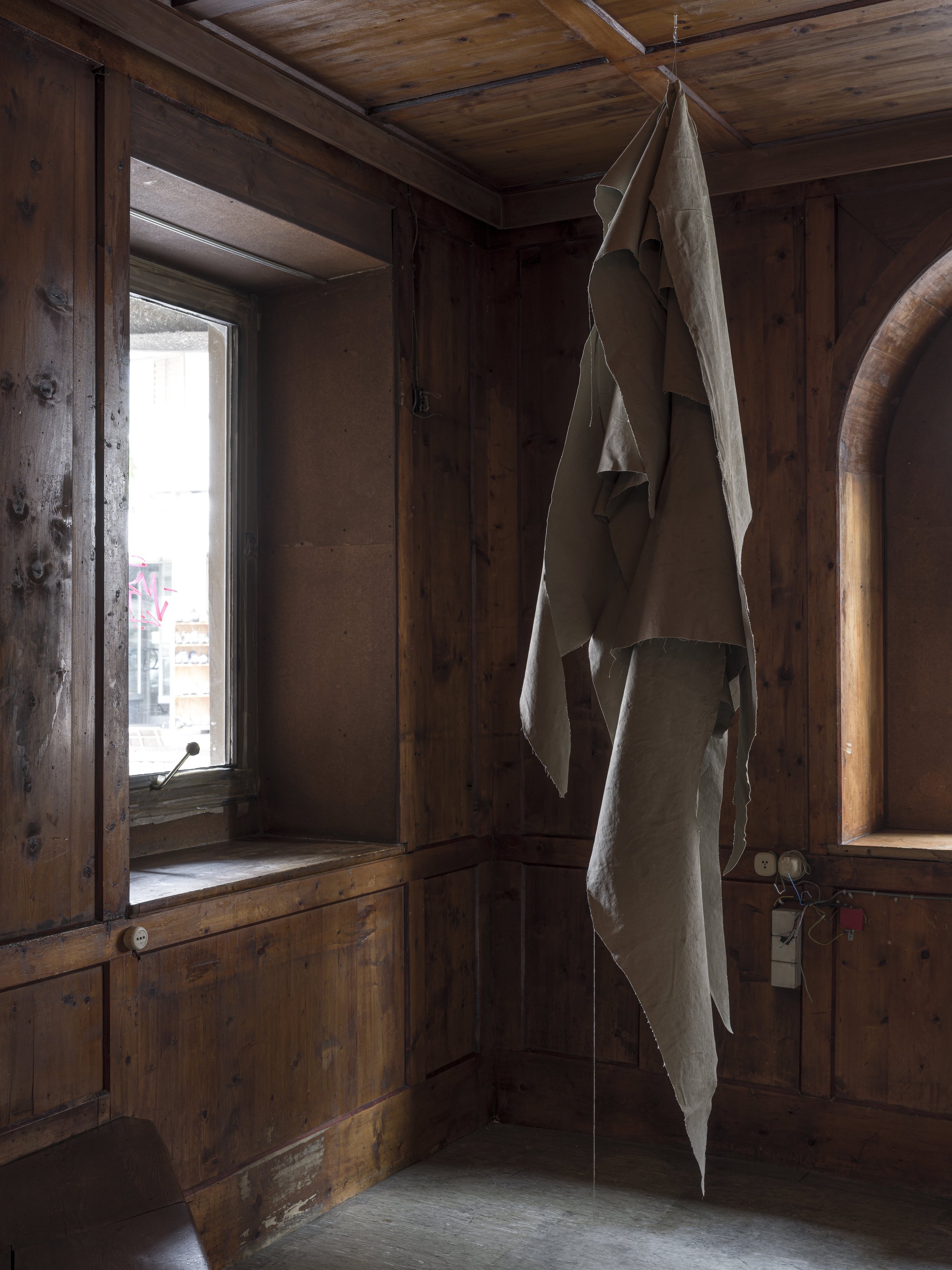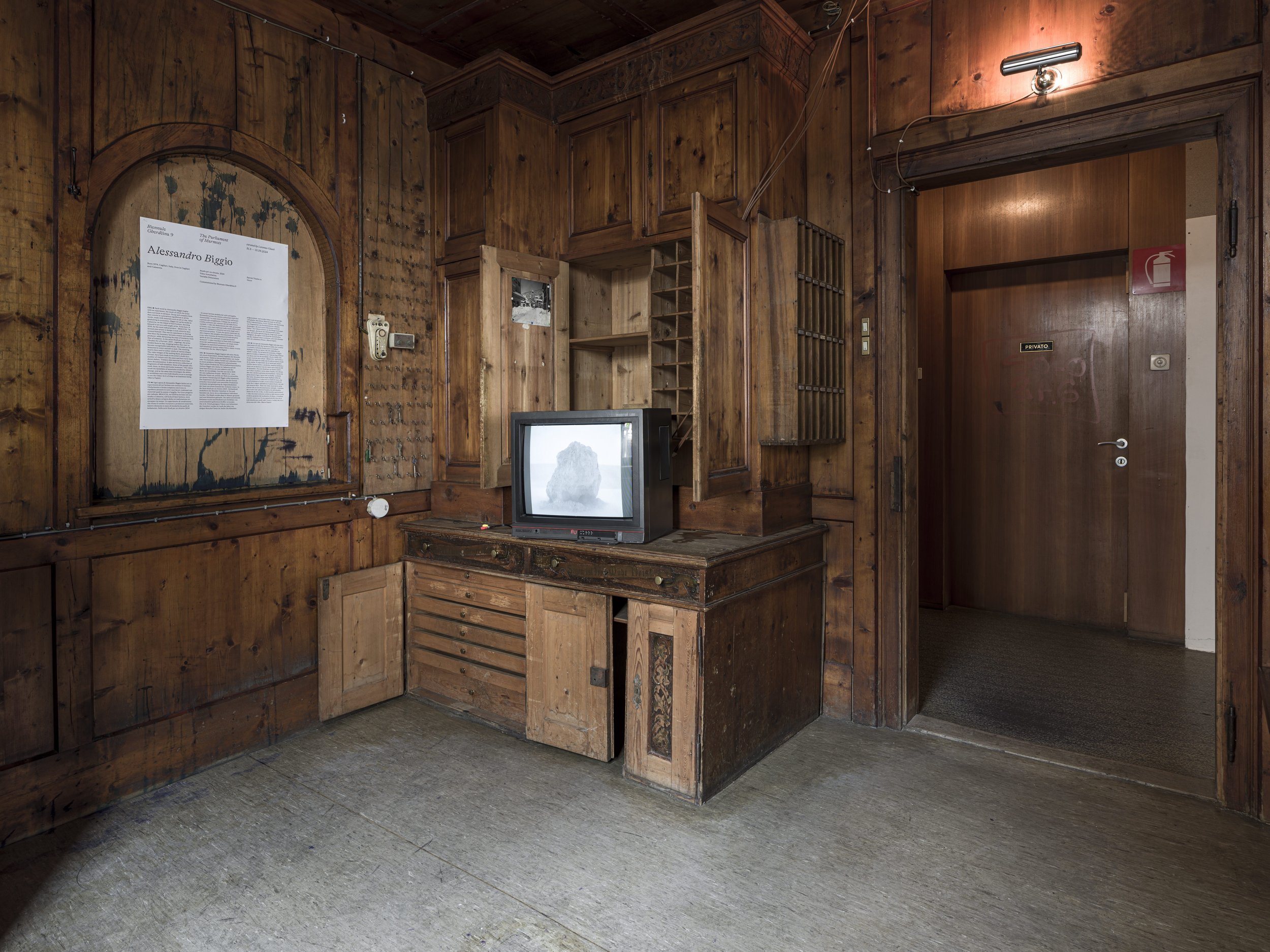
Alessandro Biggio, Ash Cones, 2010-ongoing . Ash. Variable dimensions. Photo by Tiberio Sorvillo

Alessandro Biggio, Ash Cones, 2010-ongoing . Ash. Variable dimensions. Photo by Tiberio Sorvillo

Alessandro Biggio, Ash Cones, 2010-ongoing . Ash. Variable dimensions. Photo by Tiberio Sorvillo

Alessandro Biggio, Studio per un ritratto , 2024. Video Installation. Variable Dimensions. Commissioned by Biennale Gherdëina 9. Photo by Tiberio Sorvillo

Alessandro Biggio, Studio per un ritratto , 2024. Video Installation. Variable Dimensions. Commissioned by Biennale Gherdëina 9. Photo by Tiberio Sorvillo
Alessandro Biggio
1974, Cagliari, Italy
EN Each work by Alessandro Biggio begins with an experiment, the result of which the artist does not know in advance. Decay and complete form thus coexistin a precarious equilibrium in all his works, made with materials such as ash or clay.After graduating in economics, Biggio set up his studio in Calasetta, on the island of Sant’Antioco, devoting himself to art as a self-taught artist. From here, in 2013, for his most radical project –BRACCIA– he invited nine artists to design a work which he then created himself. This was an experiment in sharing that blurs the boundarybetween creator and material producer, while distancing the state of insularity from that of isolation. WithConi di Cenere(‘Ash Cones’, 2008 - ongoing), the artist performs a gesture bordering on the oxymoronic, giving form to ash. The result isambiguous in nature: although they appear to be sculptures of solid concrete, they are actually fragile creatures, precariously balanced between decay and completed form. Although similar in appearance, each cone undergoes a drying process thatmakes it different from all the others, an inorganic mode of ageing. Their size is determined by a physical limit, which cannot be exceeded on pain of the work’scertain destruction. In the series Studi per un ritratto(‘Studies for a Portrait’, 2014– ongoing), the artist models faces in clay, stopping before they start to become recognisable individuals. The heads are then immersed in water and left to melt. The resulting mud is then used to colour cloths of various shapes. The video images of the melting faces, presented in Ortisei, have been made in the artist’s studio by a number of visitors over the years and have never been shown before. “I believe this material is more than mere documentation. It also serves as a collection of fragments of individualities: those of the people who made them, at those particular moments.”The videos recall the landslides of mountains eroded by climate change, and at the same time investigate the ability to annihilate one’s own individuality so as to manage to see the Other, be it a living or an inanimate being.
IT Ogni opera di Alessandro Biggio inizia con un esperimento di cui l’artista non conosce il risultato. Disfacimento e forma compiuta convivono in equilibrio precario in tutti i suoi lavori, realizzati con materiali quali la cenere o l’argilla.Per il suo progetto più radicale,BRACCIA, nel 2013 ha invitato nel suo studio a Calasetta, sull’isola di Sant’Antioco, nove artist3a ideare un’opera della cui realizzazione si è occupato lui stesso. Un esperimento di condivisione che sfuma il confine tra autore e produttore materiale, mentre distanzia lo stato di insularitàda quello di isolamento.CoiConi di cenere(2008 - in corso), l’artista compie un gesto al limite dell’ossimoro, dare forma alla cenere. Il risultato è di natura ambigua: pur sembrando sculture di solido cemento, sono in realtà creature fragili, in equilibrioprecario tra disfacimento e forma compiuta. Pur essendo simili all’apparenza, ogni cono subisce un processo di asciugatura che lo rende diverso da tutti gli altri,una modalità inorganica di invecchiamento. La loro dimensione è determinata da un limite fisico, che non può essere superato, pena la sicura distruzione dell’opera. Nella serieStudi per un ritratto(2014 – in corso) l’artista modella dei volti nell’argilla, fermandosi prima che inizino a diventare individui riconoscibili. Le teste sono poi immerse nell’acqua e portate allo scioglimento. Il fango che ne deriva è infine utilizzato per colorare dei teli dalle forme variabili.I video del disfacimento dei volti, presentati a Ortisei, sono stati realizzati nello studio dell’artista da alcuni visitatori e visitatrici nel corso degli anni e mai mostrati prima. “Credo che questo materiale sia altro rispetto alla semplicedocumentazione. Diventa a sua volta l’insieme di frammenti di individualità:quelle di chi li ha realizzati, in quei particolari momenti”. I video ricordano le frane delle montagne erose dal cambiamento climatico e al tempo stesso indagano la capacità di annientare la propria individualità per potere vedere l’Altro, essere vivente o inanimato che sia.
DE Alessandro Biggio beginnt alle seine Werke mit einem Experiment, dessen Ergebnis der Künstler nicht kennt. Indem er sie aus Materialien wie Asche oderTon herstellt, stehen Verfall und vollendete Form in einem prekären Gleichgewicht nebeneinander. Nach seinem Studium der Wirtschaftswissenschaften richtete Biggio sein Atelier in Calasetta auf der Insel Sant‘Antioco ein und widmete sich der Kunst als Autodidakt. Von hier aus lud er 2013 für sein radikalstes Projekt -BRACCIA- neun Künstler*innen ein, jeweils ein Werk zu entwerfen, um dessenGestaltung sich Biggio selbst kümmerte. Ein Experiment des Austausches, dasdie Grenze zwischen Autorschaft und materieller Produktion verwischt und gleichzeitig die Abgeschiedenheit der Insel von einem Zustand der Isolation trennt. Mit Coni di cenere(‘Aschekegel’, 2008 - laufend) vollzieht der Künstler eine Geste, die ans Oxymoronische grenzt: Er gibt der Asche eine Form. Das Ergebnis ist von zweideutiger Natur: Obwohl es sich um Skulpturen aus festem Beton zu handeln scheint, handelt es sich in Wirklichkeit um zerbrechliche Kreaturen, die sich in einem prekären Gleichgewicht zwischen Verfall und vollendeter Form befinden.Obwohl sie sich äußerlich ähneln, durchläuft jeder Kegel einen Trocknungsprozess, der ihn von allen anderen unterscheidet, eine anorganische Art der Alterung. IhreGröße wird durch eine physikalische Grenze bestimmt, die nicht überschritten werden darf, da sonst das Werk zerstört wird. In der SerieStudi per un ritratto(2014 - fortlaufend) modellierte der Künstler Gesichter in Ton und beendete sie,bevor sie zu erkennbaren Individuen wurden. Die Köpfe wurden dann in Wassergetaucht und zum Schmelzen gebracht. Der dabei entstehende Schlamm wurde anschließend zum Einfärben von unterschiedlich geformten Stoffen verwendet.Die in St. Ulrich gezeigten Videos vom Schmelzen der Gesichter wurden im Laufeder Jahre von einigen Besucher*innen im Atelier des Künstlers aufgenommen und wurden bisher noch nie gezeigt. „Ich glaube, dass dieses Material mehr ist als eine bloße Dokumentation. Es ist vielmehr eine Sammlung von Fragmenten von Persönlichkeiten: nämlich denjenigen, die sie in jenen Momenten realisiert haben“. Die Videos erinnern an die Hangrutschungen von Bergen, die durch den Klimawandel erodiert sind, und stellen gleichzeitig die Frage nach unsererFähigkeit, die eigene Individualität auszulöschen, um den Anderen sehen zu können,sei es ein lebendes oder ein unbelebtes Wesen.
LA Uni opra de Alessandro Biggio mët man cun n esperimënt de chël che l artistne cunësc nia l resultat. L se desfé y la forma fineda cunviv te n balanz melsegurte duta si opres, che vën realisedes cun cënder o arjila. Do na laurea de economia,à Biggio giaurì si studio a Calasetta, sun l’ijula de Sant’Antioco y se dà ju cun l’ertda autodidat. Iló al, tl 2013, nvià ite per si proiet plu radical -BRACCIA- nuefartisć a studië ora n’opra de chëla che ël nstës se à pona cruzià de la realisé. Nesperimënt de se nsentì pea ulache i cunfins danter autëur y produtëur materieldesfanta y ntant sce se destaca l stat de vester sun n ijula da chël de ijulamënt. Cuni Coni di cenere(‘chiedli de cënder’, 2008 - mo tl lëur), porta l’artist a fin n ghestal limit dl oxymoron, de forma al cënder. L reslutat ie de natura ntorta: nce sce l smea scultures de peton dur, ieles per drët criatures dlicates, tl balanz danter l sedesfé y la forma fineda. Nce sce i se smea danter ëi, va uni chiedl tres n prozes ntanche l suia, l fajan deventé desfrënt da duc i autri, na modalità nia organica dl unìvedl. Si grandëza ie determineda da n limit fisich, che muessa unì respetà scenò serumpissa l lëur.Tla serieStudi per un ritratto(2014 – mo tl lëur) mudelea l artist musc tl’arjila yël se fërma dan che i devënte persones da recunëscer. I cëves vën pona metui tl’egay lascei che i se desfej. La mauta che resta vën pona tëuta ca per depënjer tëiles deformes defrëntes. I video sun l se desfé di musc, che ie unii prejentei a Urtijëi, ieunii realisei tl studio dl artist da n valgun vijitadëures tl passé di ani y mo mei uniimustrei dant. “Rate che chësc material ie zeche d’auter che no mé documentazionscëmpla. L devënta per si cont l dut adum de framënc de ndividualità: chëles de chiche i à fac, te chëi mumënc particuleres”. I video lecorda la smueies unides ju dalamontes coche erojions gaujedes dal mudamënt dl tlima, y tl medem mumënt nriescisce l ie na capazità de fé jì ala nia si individualità per pudëi udëi l Auter, n vesterche viv o zënza ana che l sibe.